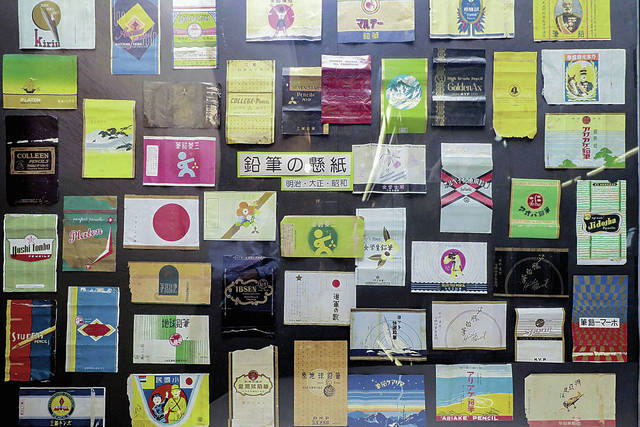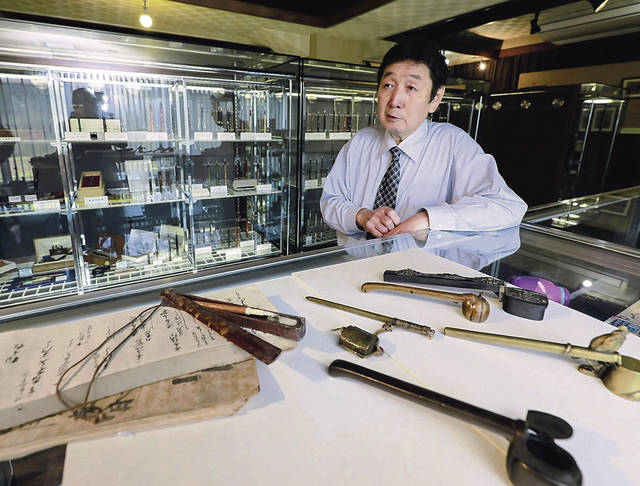Stationery museum has the write stuff

TAKU YAGINUMA / SPECIAL TO THE YOMIURI SHIMBUN
The designs of paper for wrapping lead pencils reflect the era in which they were made.

TAKU YAGINUMA / SPECIAL TO THE YOMIURI SHIMBUN
Rikio Sato shows some of the portable brush-and-ink cases displayed at the museum. They are made from materials such as wood, bamboo, metal and ivory.


The Nihon Bungu Shiryokan (Japan Stationery Museum) displays about 600 stationery items from throughout the ages. It includes mechanical pencils, writing brushes and inkstones, typewriters and calculators.
Stationery, which has supported Japan’s educational and economic development, is a worthy focus.
The Nihon Bungu Foundation for Science &Technology, a group of stationery makers and retailers, is the parent organization of this museum, which opened in 1985 in the Asakusabashi wholesale district in Tokyo.
Most of the items at the museum were donated by specialty stores and individuals. The museum purchased a few valuable items, including hanging calligraphy scrolls written by Katsu Kaishu, Yamaoka Tesshu and Takahashi Deishu, a trio known for their skilled writing who were collectively called the “bakumatsu sanshu.”
Also on display are portable brush-and-ink cases first used during the Kamakura period (late 12th century to early 14th century). About 30 of these distinctively Japanese stationery items, which feature a small inkpot joined to a brush case, are on display at the museum. These writing sets originated when samurai warriors put inkstones and brushes in the quivers they used to carry arrows. Over time, the cases were made to be tucked into an obi sash. During the Edo period (1603-1867), many of these cases were decorated with intricate patterns, and they became a fashion accessory.
The museum has an intriguing collection of papers that were wrapped around lead pencils that sold from the Meiji era (1868-1912) until the Showa era (1926-1989). They feature illustrations such as an elephant sitting on the Earth or a smiling Ebisu, the god of commerce. Some of the papers provide a snapshot of the atmosphere during the war, decorated by expressions referring to children on the home front and a song for the advancing military.
Don't miss out on what's happening!
Stay in touch with breaking news, as it happens, conveniently in your email inbox. It's FREE!
There are pencils that claimed to be “for use in exams,” “for use in self-taught training courses” and “for use by female students.”
Rikio Sato, who is in charge of the museum, can guide visitors around the facility upon request. “Although I often end up learning things from people who know more about these items than I do,” said Sato, 67.
The museum is open on weekday afternoons only and receives about 1,200 visitors each year. Most are researchers, elderly people and junior high and high school students on school excursions.
Paper, brush, ink and inkstone that originally came from China are collectively known as the “four traditional writing materials,” and in 1989 a monument to these materials was built at Yushima Tenjin shrine, which is dedicated to the god of learning.



